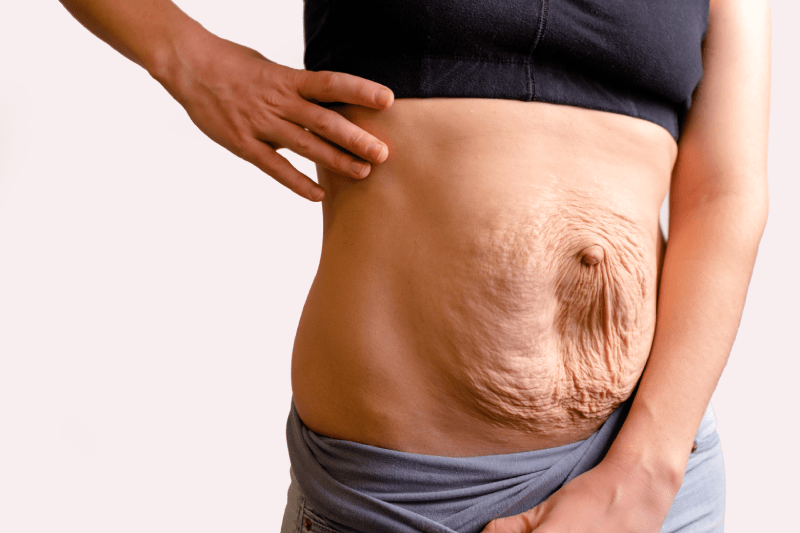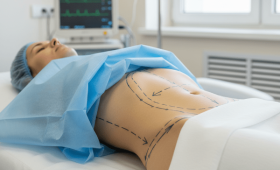Why Does Skin Sag And Loosen After Weight Loss?
The main reason why skin sags after weight loss is the prolonged overstretching of the skin, which causes permanent damage to collagen and elastin fibers. Especially when weight is lost rapidly and in large amounts, the underlying fat tissue decreases quickly; however, the skin itself, having lost its elasticity, cannot adapt to the new, smaller volume. This loss of elasticity in the skin is further exacerbated by age and environmental factors such as sun exposure. This situation can lead to distinct aesthetic and hygienic problems, particularly in the abdomen, arms, and thighs, making surgical solutions unavoidable.
What Is The Role Of Exercises In Preventing Skin Sagging?
Exercises alone are not sufficient to completely prevent skin sagging or to eliminate existing large sag, but they can provide indirect support by increasing muscle tone. Strength training, in particular, builds a solid muscle mass beneath the skin, helping the saggy skin appear firmer and fuller. However, in cases where the skin has severely lost its elasticity, the muscle mass gained through exercise cannot compensate for the physical volume created by the excess skin. Therefore, after major weight loss, exercises should be viewed as a complementary part of surgical treatment.
Are There Non-Surgical Treatment Options For Loose Skin?
Yes, non-surgical treatment options for loose skin include radiofrequency, ultrasound (HIFU), and laser treatments. These methods aim to stimulate collagen production and shorten existing collagen fibers by heating the underlying layers of the skin in a controlled manner. However, these treatments are generally suitable for mild to moderate skin laxity. For severely saggy, pouched skin, or skin with significant loss of elasticity, the effect of these non-surgical solutions remains limited, and surgical interventions like Tummy Tuck offer more permanent and satisfying results.
Which Areas Are Most Prone To Sagging After Weight Loss?
The areas most prone to sagging after weight loss are the parts of the body that store the most fat and where the skin is most stretched. These areas primarily include the abdomen (especially the lower abdomen), the undersides of the arms (bat wings), the inner thighs, and the breasts/back area. The abdomen is often the most problematic area aesthetically because it can also experience muscle wall separation (diastasis recti) due to pregnancy or excessive weight gain. Pronounced sagging in these areas can make clothing choices difficult and restrict physical activity.
What Is Tummy Tuck Surgery And How Is It Performed?
Tummy Tuck (Abdominoplasty) surgery is the process of surgically removing excess skin and fat tissue from the abdominal area after weight loss or pregnancy, and tightening the abdominal muscles (especially if diastasis recti is present). The surgery is typically performed through a horizontal incision made just above the pubic line, designed to be hidden within underwear. The surgeon pulls the skin taut, excises the excess portion, and repositions the belly button. This strengthens the abdominal wall, providing a flat and firm abdominal appearance, making it one of the most sought-after body contouring surgeries in Turkey.
Who Are The Most Suitable Candidates For Tummy Tuck Surgery?
The most suitable candidates for Tummy Tuck surgery are individuals who have lost a significant amount of weight, maintained that weight for at least six months, and have a Body Mass Index (BMI) that is ideal or close to ideal. Candidates should be in good general health, be non-smokers (or quit before the operation), and have realistic expectations regarding the outcome of the surgery. Most importantly, they must have significant sagging skin and/or abdominal muscle separation that cannot be corrected with exercise or diet in the abdominal area.
Do Non-Surgical Skin Tightening Methods Provide Permanent Results?
Non-surgical skin tightening methods (radiofrequency, laser) generally do not provide permanent results, and the tightening effect achieved diminishes over time and with the aging process. While these methods can create a temporary feeling of firmness by stimulating collagen production, this effect cannot achieve the physical and permanent tightness provided by surgically removing the excess skin. When considering the cost and the need for repetition of these treatments for major sagging, surgical interventions like Tummy Tuck are more cost-effective and satisfying in the long run.
What Is The Cost Advantage Of Tummy Tuck Surgeries In Turkey?
The cost of Tummy Tuck surgeries in Turkey is typically 50 to 70 percent lower compared to equivalent quality procedures in Europe and North America. This cost advantage stems from the country’s lower general operating and labor expenses, favorable exchange rates, and incentives for health tourism. Despite the price advantage, hospitals in Turkey hold international accreditations and utilize the latest technology and world-class experienced surgeons. This offers patients the opportunity to receive high-quality service affordably.
Is Liposuction Part Of The Treatment For Skin Sagging?
Yes, Liposuction is often used as a complementary part of Tummy Tuck surgery during the treatment of skin sagging. Liposuction removes stubborn fat deposits, particularly those remaining on the sides of the abdomen, around the waist, and the lower back, creating a smoother and more proportionate body contour. This ensures that the surrounding areas are also slimmed down beyond the volume of skin removed by the Tummy Tuck. The combined application of both procedures is crucial for achieving the most comprehensive body contouring results.

How Long Does The Recovery Process Take After Tummy Tuck Surgery?
The recovery process after Tummy Tuck surgery varies from person to person but typically requires the first 1-2 weeks for rest and restricted movement. Most patients can return to light daily activities within 2-3 weeks, but the time for full recovery and starting heavy exercise can take 6 to 8 weeks. During the recovery process, care of the incision sites, monitoring of drains, and the use of a compression garment are vital. The length of stay in Turkey during this period is usually planned for 7 to 10 days, with the remaining recovery phase continuing in the patient’s home country.
What Are The Most Effective Creams Or Lotions For Skin Sagging?
Creams or lotions available on the market for skin sagging can slightly improve the skin’s appearance, mainly by increasing surface hydration and containing some collagen-supporting ingredients (retinoids, hyaluronic acid). However, these topical products are ineffective at eliminating the loss of elasticity in the deeper layers of the skin (dermis) or the excess skin that needs to be surgically removed with a Tummy Tuck. Creams can only be used for preventative care or supporting minor laxity but do not offer a permanent solution for sagging caused by major weight loss.
How Permanent Is The Result Of Tummy Tuck Surgery?
The result of Tummy Tuck surgery is highly permanent as long as the patient maintains their weight and sustains a healthy lifestyle. The excess skin removed and the abdominal muscles tightened during the surgery provide a lasting flattening and firmness. However, major weight gains, pregnancies, or the extreme aging process may cause some future laxity. The longevity of the result largely depends on the patient’s lifestyle and nutritional habits. Therefore, maintaining the shape achieved after surgery is the most critical step.
What Should Be Included In The Price Of Tummy Tuck Surgery?
The package price for Tummy Tuck surgery should generally include: The surgery fee, the fee for the anesthesiologist and the team, hospital stay expenses (usually 1-2 nights), initial post-operative controls, necessary medications, and the cost of the special compression garment. Health tourism packages in Turkey may additionally cover airport transfers and, in some cases, accommodation costs. When receiving a price quote, clarifying the revision risk and whether there are extra costs in case of complications is important for financial transparency.
What Is The Mechanism Of Action Of Radiofrequency Treatment In Skin Tightening?
Radiofrequency (RF) treatment aims to heat the tissue beneath the skin using electromagnetic energy. This controlled heating process causes existing collagen fibers in the dermis layer to contract (shorten) and stimulates the production of new collagen and elastin over time. This renewal process creates a firmer and tighter appearance on the surface of the skin. However, the effect of RF treatment cannot eliminate the excessive skin volume removed by surgical methods; therefore, it can only provide some improvement in mild to moderate sagging.
How Visible Are The Scars After Tummy Tuck Surgery?
The scars that occur after Tummy Tuck surgery are generally permanent, but surgeons attempt to hide these scars as much as possible within the bikini line or the area covered by underwear. The final appearance of the scars depends on the patient’s skin type, genetic predisposition, rate of wound healing, and post-operative care. Scars that are initially prominent will fade over time (within 12 to 18 months) and become less noticeable. Clinics in Turkey also offer support to patients regarding scar-healing creams or laser treatments.
After How Much Weight Loss Should Surgical Treatment Be Considered?
Generally, after 25 kilograms or more of weight loss, skin sagging may reach a level requiring surgical treatment. However, this is a guideline, not a rule; the primary determining factor is not the amount of weight lost, but how much the skin has lost its elasticity and the volume of the remaining excess skin. Once the patient has stabilized their weight within the ideal range and realizes that the excess skin is affecting their quality of life (irritation, hygiene), they should begin considering surgical solutions like Abdominoplasty.
Why Should Cure Holiday Be Preferred For Tummy Tuck Surgery In Turkey?
Cure Holiday should be preferred when planning Tummy Tuck surgery in Turkey because they are a professional intermediary that manages all logistical processes, including treatment, travel, and accommodation, under one roof. Cure Holiday collaborates with clinics that meet international standards and employ expert surgeons in the field. They ensure price transparency, VIP transfer services, English-speaking interpreter support, and patient follow-up throughout the entire process, allowing patients to focus on their treatment and travel with confidence.
Can Body Contouring Surgeries Be Performed More Than Once?
Body contouring surgeries can technically be performed more than once, but the goal is to achieve the most comprehensive result in the initial surgery. For instance, touch-up surgeries (mini Tummy Tuck or liposuction) may be performed if scars remain after major weight loss or if there is a small amount of re-sagging. However, a major revision surgery implies the widening of the initial surgical scars and an increase in surgical difficulty. Therefore, it is essential for patients to maintain weight control and work with an expert surgeon to achieve the most ideal result in the initial surgical plan.
How Do Non-Surgical Ultrasound Treatments (HIFU) Affect Skin Sagging?
High-Intensity Focused Ultrasound (HIFU) treatments work by sending energy to the skin’s deeper layers, particularly the SMAS layer (superficial muscular aponeurotic system) targeted in surgical facelifts. This energy creates thermal coagulation points in the tissue, causing it to shrink and stimulating the production of new collagen and elastin in the long term. HIFU is more suitable for younger skin with mild laxity compared to individuals with severe sagging. However, it cannot replace Tummy Tuck surgery in the treatment of excessive skin resulting from weight loss.
How Are The Abdominal Muscles Tightened After Tummy Tuck Surgery?
Tightening the abdominal muscles (diastasis recti repair) during Tummy Tuck surgery is one of the most crucial steps performed by the surgeon. The separated rectus abdominis muscles in the center of the abdominal wall are brought together and tightened using sutures. These internal sutures act like an internal corset for the abdominal wall, not only providing an aesthetic flattening but also supporting intra-abdominal pressure, which can reduce back pain. This tightening is a fundamental feature that increases the functional benefits of the surgery.
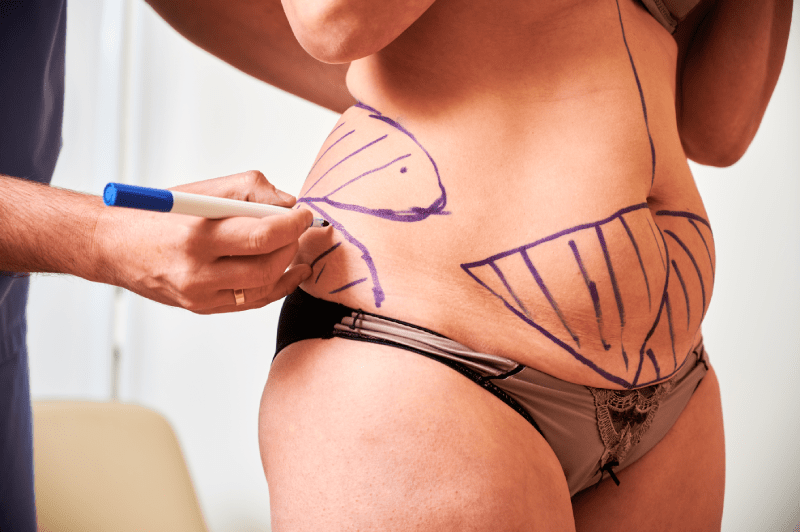
Is The Treatment For Skin Sagging Different For Those Who Lost Weight At A Younger Age?
The treatment for skin sagging in those who lost weight at a younger age (e.g., early 20s) may be potentially less aggressive than for older patients. Younger skin contains more natural collagen and elastin than older skin, meaning the skin has a higher potential to bounce back somewhat. However, if weight loss was excessive and rapid, even at a young age, surgery (Tummy Tuck) might become unavoidable. When considering surgery at a young age, the patient’s future weight fluctuations and pregnancy plans should also be taken into account.
What Kind Of Preparations Should Be Made Before Tummy Tuck Surgery?
Preparations before Tummy Tuck surgery directly affect the safety and outcome of the treatment. These preparations include: Completely quitting smoking and tobacco products at least 4-6 weeks before the surgery, discontinuing blood-thinning medications and supplements as advised by the doctor, performing detailed medical tests, and confirming suitability for the surgery. It is also important for the patient to be close to their ideal weight and to make necessary arrangements at home for the post-operative recovery period. Cure Holiday provides step-by-step guidance during this preparation process.
What Are The Suturing Techniques Used In Surgical Treatments And What Are Their Differences?
In surgical treatments (Tummy Tuck), multi-layer suturing techniques are generally used. In the outermost layer, self-dissolving sutures that remain beneath the skin are usually preferred (subcutaneous sutures), which eliminates the need for suture removal and makes scars less visible. Stronger, absorbable sutures are used in the inner layers to join and tighten the abdominal muscles. Some surgeons may also use tissue adhesives to join the wound edges. These modern techniques both minimize the scar and reduce the risk of infection.
How Is Pain Management Done After Tummy Tuck Surgery?
Pain management after Tummy Tuck surgery is critical for the patient’s comfort and early recovery. Pain is controlled with long-acting local anesthetics (pain pumps) administered during and immediately after the surgery, and regularly provided oral or intravenous painkillers. Patients may feel mild to moderate tension and pain for the first few days. Strictly following the painkiller regimen recommended by the surgeon is the most effective way to manage the pain. Clinics in Turkey implement state-of-the-art protocols for pain management.
How Many Days Of Stay In Turkey Does Tummy Tuck Surgery Require?
Tummy Tuck surgery in Turkey generally requires a total stay of 7 to 10 days. This duration includes: Detailed examination and surgery on the first day, 1-2 nights of hospitalization, and the remaining 5-8 days for recovery and follow-up checks by the surgeon at the clinic or hotel. Even if the patient’s stitches are self-dissolving, the surgeon needs to check the wound healing status and the amount of drainage. This minimum stay is vital for a safe return journey.
How Does The Cost Of Sagging Skin Treatment Vary By Treatment Type?
The cost of sagging skin treatment increases dramatically as you move from non-surgical methods to surgical solutions. Non-surgical methods like radiofrequency or HIFU may appear low-cost per session, but the total cost can increase over time due to their limited permanence and the need for multiple sessions. Although Tummy Tuck has the highest initial cost, it is the most cost-effective solution in the long run for major sagging, as it provides permanent results in a single operation.
What Complications Can Occur After Tummy Tuck Surgery?
Rare complications that can occur after Tummy Tuck surgery include infection, wound healing problems, bleeding, seroma (fluid accumulation), and temporary changes in skin sensation. It is important for patients to quit smoking and follow the surgeon’s instructions to minimize risks. Modern hospitals in Turkey reduce these risks to a minimum with high sterilization standards and experienced teams. Complications are rare and can be easily managed with early diagnosis.
What Is The Best Season For Body Contouring Surgeries In Turkey?
Body contouring surgeries (Tummy Tuck) are generally recommended to be performed in cooler seasons, such as autumn and winter, in Turkey due to the necessity of wearing a compression garment after the surgery. Cool weather makes the recovery process more comfortable and helps reduce swelling. However, thanks to Turkey’s advanced health tourism infrastructure, surgery can be safely planned in any season. Cure Holiday can organize your trip by considering the most suitable date and climate conditions for you.

What Types Of Abdominoplasty Are Among The Surgical Treatment Options?
Among the surgical treatment options, there are different types of Tummy Tuck depending on the degree of the patient’s sagging: Mini Tummy Tuck (for laxity only below the belly button), Full Tummy Tuck (includes tightening the muscles and correcting sagging above and below the belly button), and Extended Tummy Tuck (also corrects sagging extending to the sides and lower back). Your surgeon will determine the most suitable and comprehensive technique for you after the examination, which is vital for the success of the treatment.
Can Accommodation And Transfer Be Included In The Tummy Tuck Surgery Price?
Yes, one of the biggest advantages of health tourism packages in Turkey is that accommodation and VIP transfer services can be included in the price of Tummy Tuck surgery. Most clinics offer comprehensive packages that cover airport pickup, transfers between the hospital and hotel, and 7 to 10 nights of accommodation, depending on the duration of the treatment, for the comfort of international patients. These services ensure that patients can focus solely on recovery while clarifying the logistical costs upfront.
Why Is Quitting Smoking Before Surgery Critically Important?
Quitting smoking before surgery is critically important for the safety and success of Tummy Tuck surgery. Smoking severely constricts blood vessels, reducing the flow of oxygen and blood to the wound area. This situation multiplies the risk of wound healing problems, infection, and skin necrosis (tissue death). Surgeons strictly require patients to quit smoking at least one month before the operation. Failure to comply with this rule can increase both the cost and the need for revision.
What Is The Maximum Skin Tightening Rate Provided By Non-Surgical Treatments?
The maximum skin tightening rate that non-surgical treatments (radiofrequency, HIFU, etc.) can provide is typically around 10 to 20 percent. This rate may be sufficient for individuals with mild to moderate laxity and very little sagging. However, these methods are ineffective at eliminating excess skin volume (such as an apron belly) that results from major weight loss. For a real and dramatic change, surgical intervention is the only option in cases where more than 50% of the excess skin needs to be removed.
Can Tummy Tuck Surgery Be Combined With Another Procedure Simultaneously?
Yes, Tummy Tuck surgery can often be combined with other body contouring procedures simultaneously, such as Liposuction, Breast Reduction/Augmentation/Lift, or Back Lift. These combinations are popular, especially in the “Mommy Makeover” concept. Combining procedures reduces the total cost because it requires a single anesthesia and a single recovery period, and it provides a more holistic body contour. These combined surgeries are frequently performed by expert surgeons in Turkey.
What Role Does Laser Lipolysis Play In Skin Tightening?
The Laser Lipolysis procedure contributes to skin tightening by both dissolving fat cells and by the ability of laser heat to contract collagen fibers. It is a less invasive method compared to traditional Liposuction. The laser energy heats the tissue just beneath the skin to promote tightening. However, the tightening effect provided by Laser Lipolysis is again valid for mild to moderate laxity. For severely saggy skin, Tummy Tuck guarantees the highest level of tightening by physically removing the excess skin.
What Is The Emotional And Psychological Recovery Like After Tummy Tuck Surgery?
Emotional and psychological recovery after Tummy Tuck surgery is as important as physical recovery. Patients may initially feel disappointment due to swelling and bruising, but as the swelling subsides and the results become apparent, a significant increase in self-confidence and body image is observed. This surgery significantly improves the patient’s quality of life by providing freedom in clothing choices and ease of movement. Seeking professional support to stay positive and manage expectations during this process is important.
Why Is International Accreditation Of Hospitals In Turkey Important?
The international accreditation of hospitals in Turkey (such as JCI – Joint Commission International) is a guarantee of high safety and quality standards for patients. These accreditations show that the hospital adheres to global standards in all areas, from infection control to patient safety protocols, the quality of surgical procedures, and equipment sterilization. For a major surgery like Tummy Tuck, international accreditation proves that the patient is being treated in a reliable and professional environment.
When Can Exercise Be Started After Tummy Tuck Surgery?
Starting exercise after Tummy Tuck surgery must be gradual and with the surgeon’s approval. Patients can generally start light walking a few days after the surgery. Light cardio exercises that do not raise the heart rate or strain the abdominal muscles can be started after 3-4 weeks. However, a wait of at least 6 to 8 weeks is mandatory before starting heavy sports and exercises that directly work the abdominal muscles (crunches, weight lifting). Adhering to this rule is vital for preserving the muscle tightening.
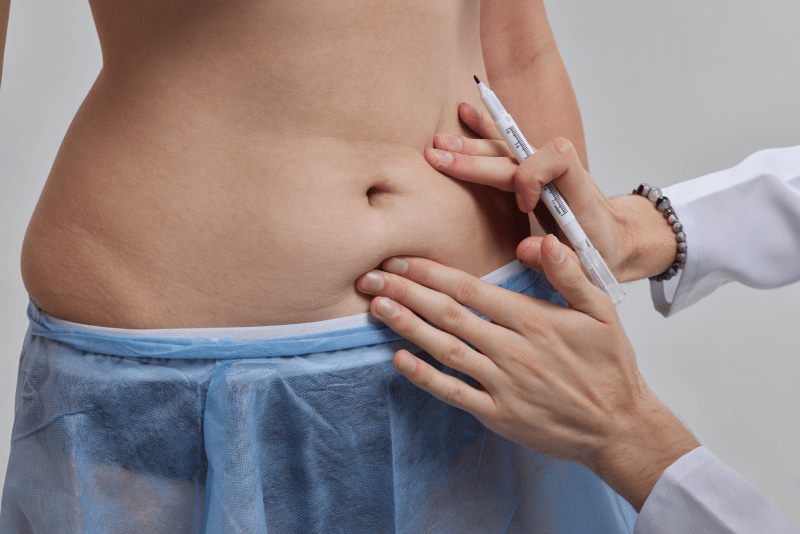
Can The Total Cost Of Non-Surgical Treatments Approach That Of Surgery?
The total cost of non-surgical skin tightening treatments can approach and even exceed the cost of Tummy Tuck surgery over time for patients with major sagging and in cases where treatment needs to be continuously repeated. Since non-surgical treatments have limited permanence, patients often have to purchase additional sessions at regular intervals (every 6-12 months) to maintain or improve the results. This recurring cost overshadows the single-instance permanent cost advantage of surgery. Therefore, for severe sagging, surgery is a more predictable and economically viable long-term solution.
What Should Nutrition Be Like After Tummy Tuck Surgery?
Nutrition after Tummy Tuck surgery should be high in protein and fiber to accelerate the recovery process and reduce the risk of complications. High protein (chicken, fish, legumes) supports the formation of new tissue and collagen, while fibrous foods (fruits, vegetables) prevent constipation, which is common after anesthesia. Additionally, drinking plenty of water helps reduce swelling and supports drainage. Avoiding salt, alcohol, and processed foods is critical for keeping edema under control during the recovery process.
What Should Be Considered When Receiving A Quote For Tummy Tuck In Turkey?
When receiving a quote for Tummy Tuck in Turkey, the following should be considered: 1) What the quote covers (hospital, anesthesia, compression garment, transfer, accommodation), 2) Revision policy (whether there are additional costs if rarely needed), 3) The surgeon’s specialization and experience (is it a plastic surgery specialist), 4) The quality of the hospital and equipment used. Instead of focusing solely on a low price, choosing a transparent and comprehensive package that meets all the above points is the safest approach. Cure Holiday clarifies all these details for you.
What Is The Most Suitable Age Range For Sagging Skin Treatment?
The most suitable age range for sagging skin treatment is the age at which the patient has completed the weight loss process and stabilized their weight. Aesthetic surgery focuses on health status and skin quality rather than age. Patients typically between their late 20s and early 50s have the best recovery potential, but older patients with good general health can also achieve successful results. Women with future pregnancy plans are advised to postpone the surgery.
Can Umbilical Hernia Repair Be Done Together With Tummy Tuck Surgery?
Yes, umbilical hernia repair can be safely performed simultaneously during Tummy Tuck (Abdominoplasty) surgery. In fact, since the muscles and tissues around the belly button are manipulated, combining these two procedures in a single surgical session is a common practice. This combination allows the patient to resolve both their aesthetic and functional problems with a single recovery period, which is a major advantage in terms of cost and time. The surgeon must definitely check for the presence of a hernia during the pre-operative diagnosis.
Is The Failure Rate High For Non-Surgical Treatments?
The failure rate for non-surgical skin tightening treatments (laser, RF) is high depending on the patient’s degree of sagging. The treatment may be considered a failure if applied to the wrong candidate (a person with excessive sagging skin) or simply because the expected result is low. In patients with severe loss of elasticity, expecting a meaningful tightening from non-surgical methods is unrealistic. Therefore, turning to surgical solutions like Tummy Tuck is more logical for realistic results and high satisfaction.
When Can Driving Be Resumed After Tummy Tuck Surgery?
The time to resume driving after Tummy Tuck surgery generally ranges from 2 to 3 weeks. During this period, sudden steering movements and braking actions can put pressure on the abdominal muscles and sutures, causing pain and healing problems. Patients are advised to start driving only after they are sure they are not taking painkillers and feel comfortable and in control. Driving should definitely be avoided during the first 7-10 days of the stay in Turkey.
How Many Sessions Are Required For Non-Surgical Treatments And What Is The Cost?
Non-surgical skin tightening treatments (radiofrequency, HIFU) are usually applied in a series of 3 to 6 sessions to achieve the desired result. The time between sessions is typically planned at 4-6 week intervals. The cost increases directly with the number of sessions, and the fee for each session varies according to the technology used and the size of the area being treated. These recurring costs offer a less predictable cost structure in the long run compared to the single-instance package price of Tummy Tuck surgery.
How Important Is The Compression Garment Used After Tummy Tuck Surgery?
The special compression garment used after Tummy Tuck surgery is a critical part of the recovery process and generally needs to be worn continuously for at least 4 to 6 weeks. The garment helps reduce swelling (edema) and bruising by applying constant, even pressure to the surgical area. It also supports the tightened abdominal muscles and contributes to the settling of the surgical area’s shape. Irregular use of the garment can increase the risk of fluid accumulation (seroma) and reduce the quality of the final result.
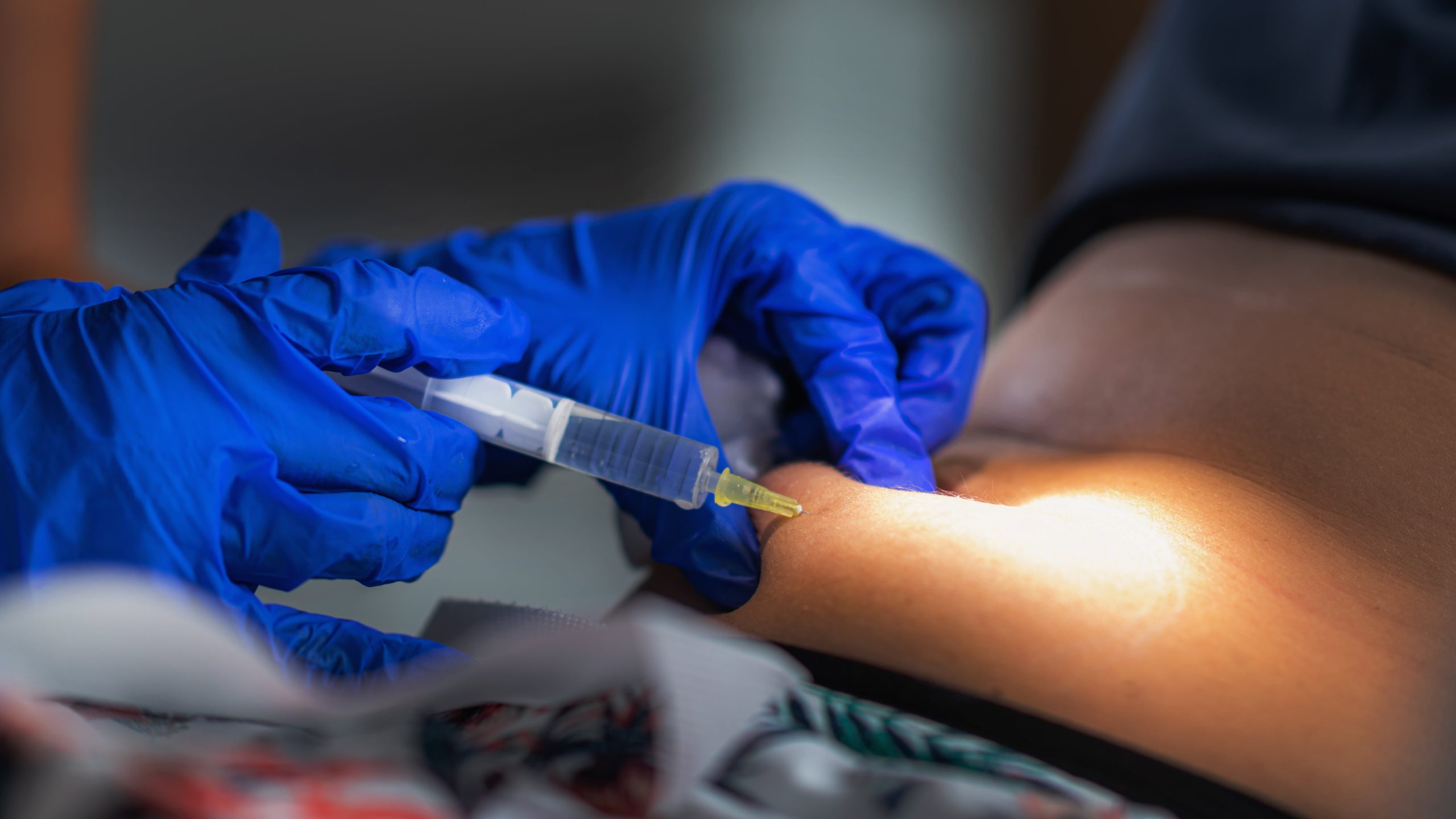
How Are Body Lift Surgeries Planned For Major Weight Loss?
In cases of major weight loss (after Bariatric Surgery), body contouring is usually planned as a series of surgeries (Body Lift). This plan includes procedures such as Tummy Tuck, Arm Lift, Thigh Lift, and Back Lift. These surgeries are generally performed in 2 or 3 separate sessions, 6 months apart, considering the patient’s safety and recovery time. This multi-stage approach allows the patient’s body time to heal and facilitates cost management. Cure Holiday can guide you through this long-term planning.
Does The Skin And Fat Tissue Removed In Tummy Tuck Surgery Regrow?
The skin and fat tissue surgically removed in Tummy Tuck surgery do not regrow because these tissues are permanently taken out of the body. However, if the patient gains excessive weight after the surgery, the remaining fat cells in the abdominal area can swell and cause a renewed distortion of the abdominal contour. Therefore, a healthy diet and regular exercise are essential to maintain the firm and flat abdominal appearance achieved after the surgery.
Are Tummy Tuck Procedures Performed For Medical Reasons Covered By Insurance?
Tummy Tuck procedures performed for medical reasons can generally be covered by insurance, but this depends on the insurance company and the details of the patient’s policy. The medical justification typically includes functional problems caused by excessive sagging skin (apron belly), such as chronic chafing, fungal infections, hygiene issues, or back pain. Surgeries performed purely for aesthetic concerns are not covered by insurance. Comprehensive medical reports and photo evidence are required to be covered by insurance.
What Should Be The Correct Posture And Sleeping Position After Tummy Tuck Surgery?
The correct posture and sleeping position are vital in the first few weeks after Tummy Tuck surgery to avoid putting pressure on the incision line. Patients are asked to stand slightly bent forward (hunchback) to reduce tension in the abdominal area. In the sleeping position, a position where the knees are slightly bent and the back is elevated (e.g., supported by several pillows) is recommended. This position minimizes strain on the abdominal muscles and the incision line, increasing comfort and supporting healing.
What Tests Are Mandatory Before Body Contouring Surgeries?
A series of medical tests are mandatory before body contouring surgeries (Tummy Tuck) to evaluate surgical suitability. These generally include complete blood count, blood type, liver and kidney function tests, coagulation (blood clotting) tests, EKG, and a chest X-ray if deemed necessary. These tests are performed to assess the anesthesia risk and ensure the patient is ready for surgery. Clinics in Turkey usually include these mandatory tests in the package price.
What Is Done To Improve The Appearance Of Scars After Surgical Treatment?
To improve the appearance of scars after surgical treatment, a series of care and treatment methods are applied once the wound has completely closed. These include using silicone sheets or gels, regularly applying the scar-healing creams recommended by the surgeon, and protecting the scar area from the sun. Scars require a long process (1-2 years) to mature and fade. In some cases, aesthetic procedures like laser or microneedling may be applied to make the scars even less noticeable.
How Does The Need For Repeat Sessions Affect The Cost Of Non-Surgical Treatments?
The need for repeat sessions in non-surgical treatments (radiofrequency, HIFU) multiplies the total cost of the treatment. Since non-surgical methods do not offer a permanent solution, patients often have to purchase additional sessions at specific intervals to maintain or improve the results. This turns the initially low starting cost into a high annual expense. Therefore, Tummy Tuck offers a more predictable cost structure as a single investment for patients with severe sagging.
Does Getting Pregnant After Tummy Tuck Surgery Ruin The Result?
Getting pregnant after Tummy Tuck surgery can greatly compromise the aesthetic results of the surgery. The tightened abdominal muscles and the excess skin removed during the operation may revert to their previous state when the abdomen stretches again during pregnancy. Therefore, surgeons strongly recommend that female patients considering Tummy Tuck surgery should have completed their future pregnancy plans. If pregnancy occurs after the surgery, a second touch-up surgery may be needed after childbirth to restore the aesthetic appearance.
Which Services Offer The Biggest Discounts In Turkey’s Package Prices?
Tummy Tuck package prices in Turkey usually offer the biggest discounts on hospital and surgical fees and logistical services (transfer and accommodation). The low operating costs of hospitals allow surgical fees to be more affordable than in Western countries, while health tourism companies secure bulk discounts on hotel and transfer services through large-volume agreements. This integrated discount means a comprehensive cost advantage applied not only to the treatment but also to all the patient’s travel expenses.
When Is The Best Time To Prevent Sagging That Occurs After Weight Loss?
The best time to prevent sagging that occurs after weight loss is the moment the weight loss process begins. Keeping the pace of weight loss gradual and slow (2-4 kg per month) gives the skin time to adapt. High-protein nutrition and regular strength training during this process are important for preserving muscle mass beneath the skin. However, once major sagging has occurred, it is not possible to achieve a complete reversal with non-surgical methods, and surgical intervention emerges as the most effective solution.
What Is The Price Difference Of Liposuction Combined With Tummy Tuck Surgery?
The addition of Liposuction to Tummy Tuck surgery (Lipoabdominoplasty) increases the total cost slightly, but this increase is much lower than having the two surgeries performed separately. The price difference stems from the extra surgical time, special cannulas and equipment use required for Liposuction, and the surgeon’s expertise fee. However, since the addition of Liposuction significantly improves the aesthetic result of the Tummy Tuck (especially waist slimming and flank contours), this additional cost is generally viewed by patients as an acceptable investment.
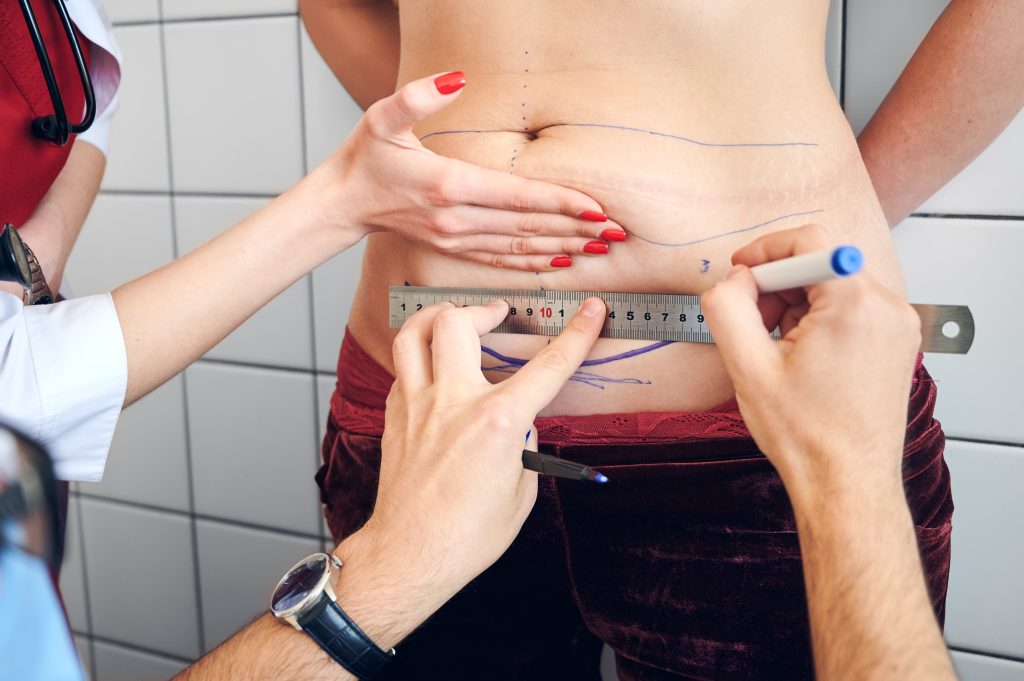
Why Are Massage And Drainage Important After Tummy Tuck Surgery And What Is The Cost?
Massage (lymphatic drainage) after Tummy Tuck surgery plays a critical role in reducing swelling and edema and accelerates the recovery process. These massages also help reduce the risk of fluid accumulation (seroma). The cost of lymphatic drainage massages is usually not included in the total surgery package and is taken for a separate fee. It is possible to find these massage services at affordable prices in Turkey, but it is essential that the massages are performed by specialized therapists in this field.
What Role Does The Patient’s Medical History Play Before Tummy Tuck Surgery?
The patient’s medical history before Tummy Tuck surgery plays the most important role in determining the surgical risk. Past major surgeries, chronic diseases (diabetes, hypertension), allergies, and medications used are examined in detail. Special attention is paid to vitamin deficiencies in patients who have undergone bariatric surgery and conditions caused by rapid weight loss. Based on this information, the surgeon determines the type of anesthesia, the surgical technique, and the precautions to minimize the risk of complications, which is vital for the safety of the operation.
Is The Post-Surgical Diet And Nutrition Program Included In The Price?
The post-surgical diet and nutrition program is generally included in the price in some of Turkey’s comprehensive health tourism packages. These programs are prepared by a nutritionist (dietitian) to support the patient’s recovery process and ensure long-term weight control. The inclusion depends on the package details; some clinics offer only a one-time consultation, while others may provide online follow-up services for the first 3-6 months. Ensuring this support is included in your package is important for your long-term success.
What Is The Biggest Factor Affecting The Aesthetic Outcome Of Tummy Tuck Surgery?
The biggest factor affecting the aesthetic outcome of Tummy Tuck surgery is the surgeon’s experience and artistic ability and the patient’s skin quality. An experienced surgeon not only removes excess skin but also naturally shapes the abdominal contour, slims the waist area, and hides the scar in the least noticeable way. The patient’s good skin elasticity directly increases the quality of the tightness and smoothness achieved after the surgery. Therefore, choosing a specialist plastic surgeon in Turkey is a critical investment.
How Safe Is It To Have Tummy Tuck Surgery In Turkey?
Having Tummy Tuck surgery in Turkey is extremely safe when hospitals with international accreditations and expert surgeons are preferred. Turkey has adopted high standards in health tourism, uses state-of-the-art equipment, and has many qualified plastic surgeons who have trained in Western countries. Safety depends not only on the surgeon’s experience but also on the complete performance of mandatory pre-operative tests and careful post-operative follow-up. Using reliable intermediaries like Cure Holiday is recommended for a safe choice.
This detailed guide highlights the limitations of non-surgical methods for sagging skin treatment after weight loss and the permanent, comprehensive results provided by Tummy Tuck surgery.
To find out about the best treatment options in Turkey for permanent and effective body contouring, along with the most suitable package prices and all travel/accommodation organization, contact Cure Holiday now and confidently step into your new life!
